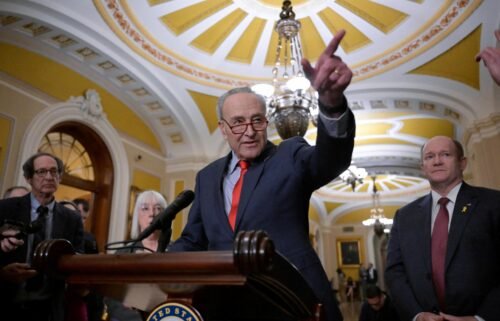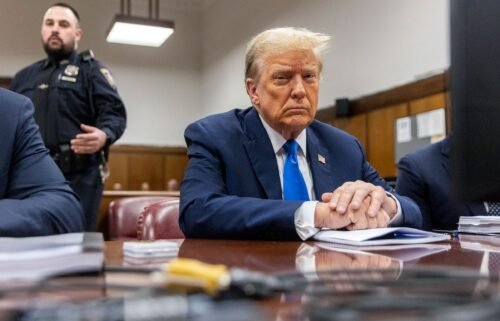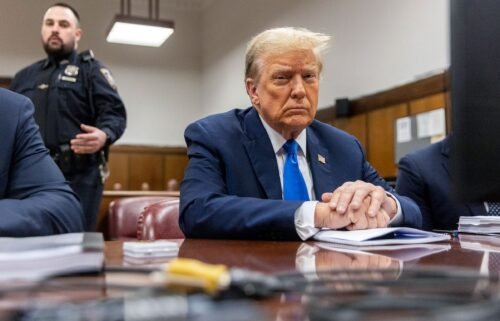Proximity to power: What the West Wing office layout says about the Biden administration
It’s an adage in any high-pressure office: proximity is power. Nowhere is that more true than the West Wing.
President Joe Biden begins his term with a team of seasoned Washington operators whose placement inside the building provides clues to who will be close at hand in moments of crisis and who is most likely to encounter the President when he’s working from his office.
Unlike his predecessor, who professed a love for governing by chaos and whose aides were constantly jockeying for face-time, Biden appears more likely to go by-the-book. Officials say his meetings are run more traditionally, with a set list of attendees and usually an agenda.
And the door to the Oval Office won’t be kept open for aides to drop in, as in the Trump-era. Traditional gatekeepers such as the chief of staff and an executive assistant will have the kind of control over Biden’s schedule that didn’t exist during periods of President Donald Trump’s tenure.
But the opportunity that comes with a choice workspace remains. And the value of prime White House real estate is even higher, considering how many aides are working remotely during the pandemic.
It’s not about whether the offices afford a majestic view of Washington, considering many of the work spaces have little to no external views at all. Instead, the proximity to the Oval Office offers an unspoken nod to the hierarchy surrounding the President.
Office space can also be used to elevate a particular official or issue critical to the President’s agenda. Biden has placed Jeff Zients, his Covid response coordinator, in an office on the second floor, lending stature to his role in combating the pandemic.
Mike Donilon and Steve Ricchetti, senior advisers to Biden who are longtime members of his inner circle, are setting up shop in small offices just steps from the Oval Office and the President’s private dining room. They take over rooms once occupied by advisers such as Jared Kushner and Steve Bannon during the Trump administration, David Axelrod during President Barack Obama’s and George Stephanopoulos when Bill Clinton was president.
At the end of the hall, Ron Klain, the chief of staff, has a corner office with a fireplace and an outdoor terrace. Aside from the Oval Office, it’s the most spacious office in the West Wing. Vice President Kamala Harris also has a large office just next door, along with far more spacious quarters in the Eisenhower Executive Office Building, which sits next to the White House.
Jennifer O’Malley Dillon and Bruce Reed, who serve as deputy chiefs of staff, also sit in the narrow alcoves with close access to the Oval Office.
Situated right outside the Oval Office are staff who act as Biden’s personal aides and manage the room’s operation, including the “director of Oval Office operations” — a position once held by Trump’s former bodyguard.
In the other “corner offices” on the first floor of the West Wing are the national security adviser and the press secretary. Both frequently attend meetings with the President.
Ordinarily, their deputies and assistants would crowd the desks outside their offices. Yet the coronavirus pandemic has altered how the building is filled.
Gone are the days of aides stuffing into offices for brain-storming sessions or meetings. The Biden administration is taking the pandemic remarkably seriously — far more so than the last occupants of these offices — and many advisers are not allowed in the West Wing.
The pandemic has scattered some key aides who would ordinarily work from the West Wing to other parts of the White House campus, officials said, with myriad Covid-19 precautions in place, including regular testing, universal masking and other safety measures.
“Additional aides are working from home and using a variety of tools to stay in touch and carry out their work,” a White House official told CNN.
The White House counsel, the directors of the National Economic Council, office of legislative affairs and domestic policy are all expected to be on the second floor of the West Wing, along with those heading up the fight against coronavirus.
Unlike in the Trump administration, no family members will occupy formal roles or offices in the West Wing. And unlike in the Clinton administration, the first lady will not have a West Wing office. Jill Biden will work from the traditional first lady’s quarters in the East Wing of the White House.
Some alumni from the Obama administration may find the West Wing looks slightly different from when they left four years ago. Under Trump, the carpets were changed out, walls were painted and some of the hardware was refreshed during a renovation early in his term. Air conditioning and heating systems were also replaced.
But the scale of the space has remained the same. Aside from the offices in the corners of the building, the working spaces are minuscule — particularly for officials accustomed to more spacious conditions.



